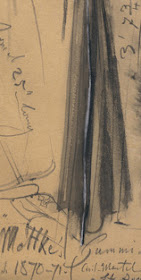Bernini's sculpture was commissioned by the Catholic church for the Cornaro Chapel in Rome. Regardless of Bernini's motives, it certainly attracted the crowds. For centuries, devout housewives sat in the church thinking, "I'll have what she's having."
350 years after Bernini, Popes and kings no longer buy art. They have been replaced by a new commercial class of patrons, fueled by the birth of capitalism and the ascendancy of the modern corporation. But some things never change. Whether church or refrigerator manufacturer, they still commission artists to sell their products with promises of ecstasy.
The great illustrator John Gannam had a gift for portraying women ecstatic over a gift of new blankets or sheets
.
And of course, hundred of anonymous illustrators have depicted women over the years in a state of delirium over new refrigerators, cars, jewelry or laundry detergent. The formula is the same as Bernini's-- head tilted back, lips parted, toes curled, eyes rolling -- it's just in the service of a different sponsor.
These latter day corybants seem to be in paroxysms before the unholy shrine of Wurlitzer:
As Paul was awestruck by a flash of heavenly light on the road to Damascus, so this gentlemen seems awestruck-- his mouth agape and his eyes bulging-- at the glow from the juke box:
























